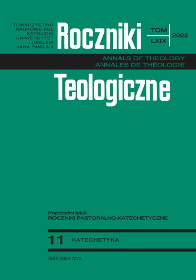HOW MIGHT WE APPLY THE TRINITARIAN NOTION OF ‘PERSON’ TO MERE HUMANS?
HOW MIGHT WE APPLY THE TRINITARIAN NOTION OF ‘PERSON’ TO MERE HUMANS?
Author(s): Colin PattersonSubject(s): History of Church(es), Philosophy of Religion, Systematic Theology, Pastoral Theology, Sociology of Religion
Published by: Towarzystwo Naukowe KUL & Katolicki Uniwersytet Lubelski Jana Pawła II
Keywords: person; nature; self; relationality; singularity; semblant;
Summary/Abstract: Theological reflection along with the discernment of Church councils during the first seven centuries of the Church’s history led to a remarkable and original notion of ‘Person’ which finds a place at the heart of the Christian profession of faith. We believe in one God in three Persons and in the Son of God, the second Person of the Trinity, who unites in himself divine and human natures. Such a conception of Person applied to God did not result in a similarly profound re-thinking of the personhood of human beings other than Christ, that is, mere humans. But what might be the outcome if such a translation were to be made? This article explores that possibility, highlighting three features of the theological understand- ing of divine Persons: divine Persons cannot be conceived in positive terms; divine Persons are utterly singular; and divine Persons have reality only in relation to each other. While at first glance the translation does not look promising, it is argued that a deeper analysis suggests otherwise. Upon that basis, the article examines some of the implications of such an under- standing and in doing so, introduces the concept of ‘semblant’ as a necessary mediating concept between those of ‘person’ and ‘human nature’.
Journal: Roczniki Teologiczne
- Issue Year: 69/2022
- Issue No: 11
- Page Range: 197-219
- Page Count: 23
- Language: English

